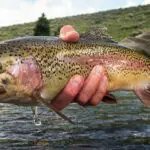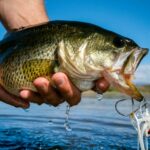Fishing from a canoe is likely to be a peaceful and exhilarating adventure for most fishermen. The interaction presents the opportunity to completely appreciate the charm of untamed surroundings, a blend of tranquility and fulfillment. To stay put while fishing can lead to challenges due to the influence of currents and winds.
Your technique and equipment determine the quality of your canoeing experience. Choose the correct anchor for your canoe to anchor it safely. Follow these steps to anchor your canoe safely:
- Prepare your canoe and anchor
- Deploy and adjust your anchor
- Retrieve and store the anchor
Numerous nations, including Polynesia, the Amazon basin, and North America, used canoeing for long-distance travel. There are many different ways to anchor your canoe while fishing. The type of anchor used, the water and weather conditions, and the strategy can all have an impact.

How To Anchor A Canoe When Fishing
Anchoring your canoe while you focus on fishing is a helpful technique to ensure your attention stays on the rod and line. A canoe anchor requires precision, and its size needs to fit your boat. There are a few simple steps to follow in order to anchor your canoe correctly and ensure you don’t float away when the current or wind picks up.
Step 1: Choosing The Right Anchor
Selecting the perfect canoe fishing anchor involves carefully considering the available choices. Your anchor could make or break a stable and prosperous fishing trip. Two familiar favorites, the claw anchor and the folding grapnel anchor, offer distinctive advantages. Canoeists prefer the folding grapnel anchor because of its portability and lightweight design.
They have sufficient holding ability for most fishing circumstances and effectively hold onto rocks, plants, or the lake bottom. The claw anchor, also known as the Bruce anchor, is ideally suited to a wide variety of seabed conditions due to its exceptional holding strength and adaptability.
Moreover, considering a drift sock can be beneficial for slowing your canoe’s drift in windy conditions or strong currents, maintaining a controlled fishing position. Selecting the appropriate anchor is essential to ensure a seamless canoe fishing adventure. Knowing the distinctive characteristics of each anchor type empowers fishermen to make well-informed decisions that match their specific fishing requirements and personal preferences.
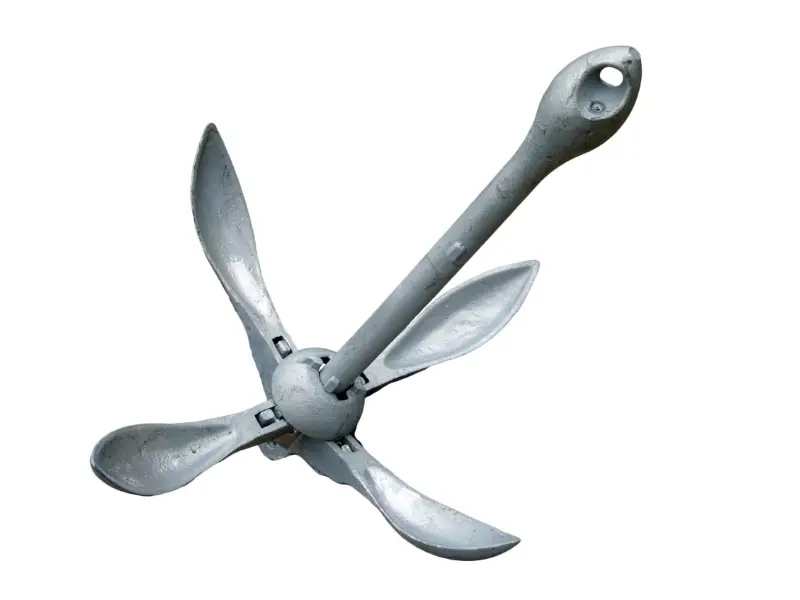
Step 2: Preparing Your Canoe And Anchor
Securely attach the anchor line (Rope) to the anchor. Use a sturdy knot, such as a bowline or anchor bend, to ensure a strong connection. It would be best to consider the depth of the water you will be fishing in when determining your anchor line length. The general rule of thumb is to use a line at least three times the depth to provide sufficient scope for anchoring.
Once you have assembled your anchor, you must find a suitable fishing spot. When searching for the ideal location, consider the wind direction, currents, and any underwater structures that may attract fish. Once you have arrived at your fishing spot, always remember to ensure all fishing gear is organized and accessible and passengers are seated properly to maintain the canoe’s stability during anchoring.
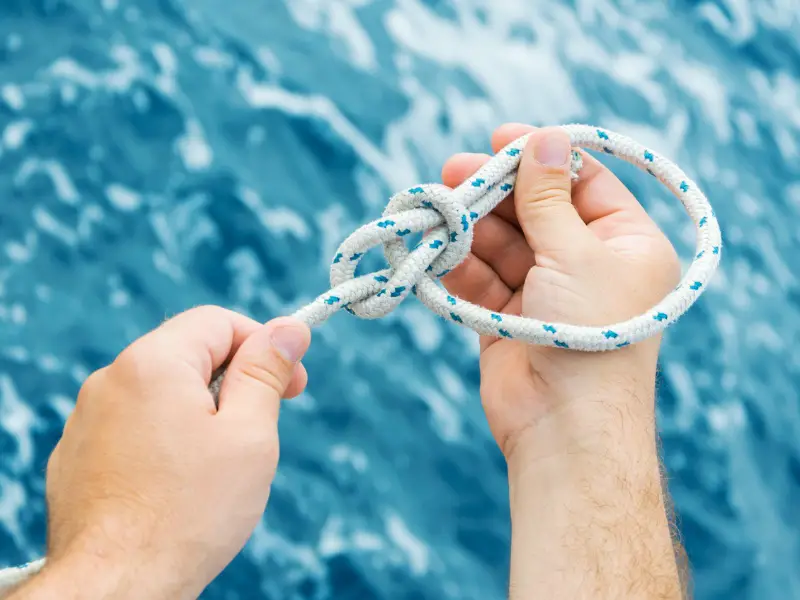
Step 3: Deploy Your Anchor
Before anchoring, ensure your canoe is stable and properly balanced to prevent it from tipping over. Familiarize yourself with the canoe’s weight capacity and avoid overloading it with fishing gear or heavy loads. Always carry a life jacket and wear it while fishing. Unexpected events can happen on the water, and a life jacket can be a lifesaver in an accident. Replace frayed or damaged ropes immediately to prevent anchor failure.
Carefully lower the anchor over the side of the canoe, allowing it to descend toward the bottom. Once the anchor touches the bottom, let it settle and dig into the surface for secure holding. Slowly pay out the anchor line as the canoe drifts backward with the current or wind.
Ensure you have enough line on the anchor to maintain a proper distance from the anchored spot. Once you have let out enough line, secure it to the canoe’s cleat or tie-off point. Make sure you firmly fasten it to prevent slippage.
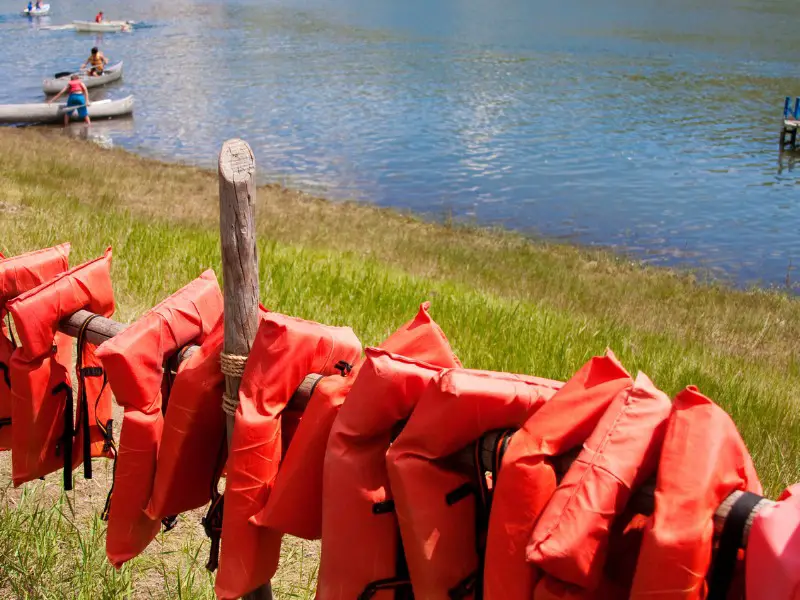
Step 4: Adjust And Maintain Your Anchor
If you install an anchor trolley system, you can easily adjust the position of the anchor to fine-tune your fishing location without pulling up the anchor. Remember that the canoe may still drift slightly with the current or wind when you start fishing. Be cautious when casting or landing fish that you maintain your balance.
Periodically check the anchor to ensure it is holding firmly. If you notice any signs of dragging, such as a sudden change in canoe position, consider re-anchoring or using a different anchor type. To re-anchor, simply adjust and resecure the anchor. Alternatively, hoist the anchor and restart the anchoring process.
Step 5: Packing Up Your Equipment
When you are ready to move on or call it a day, carefully retrieve the anchor by pulling in the anchor line. Avoid jerking or yanking the line to prevent instability or damaging the equipment. Once the anchor is on board, secure it in its designated storage location to avoid interference while paddling.
Conclusion
Every angler should try to perfect the canoe anchoring technique for fishing. The anchoring method, line length, and anchor choice determine stability, safety, and success on the water. Using extra gear like the drift sock and anchor trolley system will give you more control over where you fish, even under challenging conditions.
Remember to respect the environment, use appropriate fishing techniques, and enjoy the serenity of nature as you go out on your canoe fishing expeditions. By confidently anchoring your canoe and ensuring safety, you’ll make cherished memories, strengthen your connection with the water, and ignite a lasting love for this memorable and enjoyable fishing experience.
- Do You Need An Indicator For Nymph Fishing? - November 16, 2023
- Fishing Safety Tips For Families - September 25, 2023
- What Is The Best Time To Night Fish At A Lake? - September 18, 2023

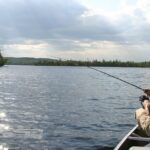
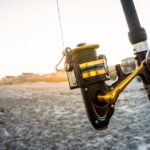
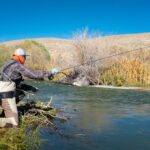
![Kayak Fishing for Beginners [10 Tips for a Successful Trip] fishing kayak moored on a beach](https://irvinelake.net/wp-content/uploads/2022/12/kayak-fishing-for-beginners-150x150.png)
